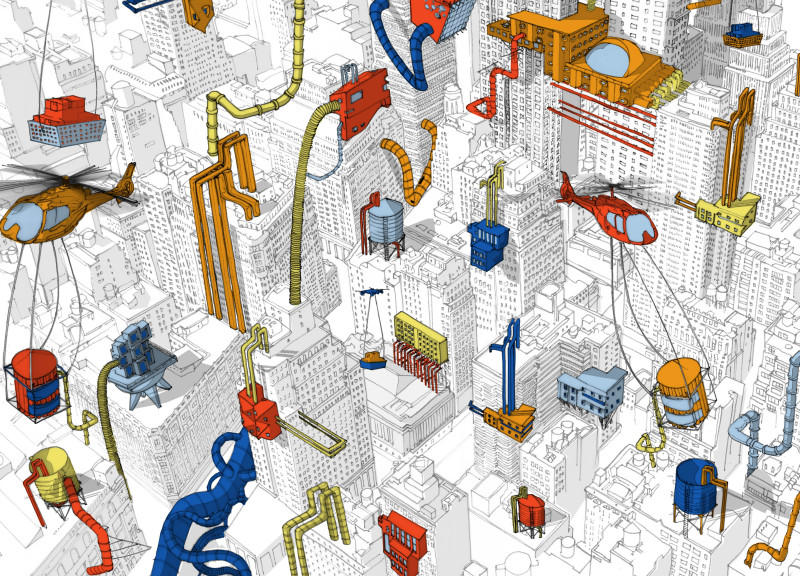5 key facts about this project
Waste Invaders is situated in an urban landscape burdened by wasteful consumption and excess materials. The project aims to confront these challenges through the innovative use of repurposed resources. By establishing a new living space above the existing city infrastructure, it seeks to create a balance between livability and environmental responsibility. The design encourages a sense of community while focusing on sustainable urban practices.
Conceptual Framework
The model uses a layered approach, with the new city positioned above an older, waste-centric environment. This vertical design takes advantage of underutilized areas, turning them into productive spaces. Waste is no longer seen as a burden but as a resource to tap into. Residents are encouraged to engage with their environment, emphasizing a shift in how urban spaces are perceived and utilized.
Resource Management
Recycling and upcycling are central to the vision of Waste Invaders. Organic waste is transformed into compost for gardens situated on rooftops, helping to promote local biodiversity. This design integrates green spaces into the urban fabric, allowing for social connections among residents and fostering a community engaged in environmental practices that benefit their neighborhood.
Energy and Water Efficiency
Energy management is crucial in this design, focusing on reducing electricity consumption. The aim is to allocate resources effectively based on individual household needs, thereby creating a self-sufficient living environment. Water systems that recycle grey water are included as well. This approach minimizes waste while ensuring that residents have access to necessary resources, reinforcing the idea of responsible living in an urban setting.
Architectural Synergy
Specific materials are not listed in the presentation, yet the emphasis lies on the practical aspects of the space configurations. The design intertwines ecological strategies with everyday living. The narrative culminates in a vision where waste from the older city below serves as a foundation for a sustainable new community above. It highlights a continuous cycle of resource recovery, which is essential for future urban developments.
























































